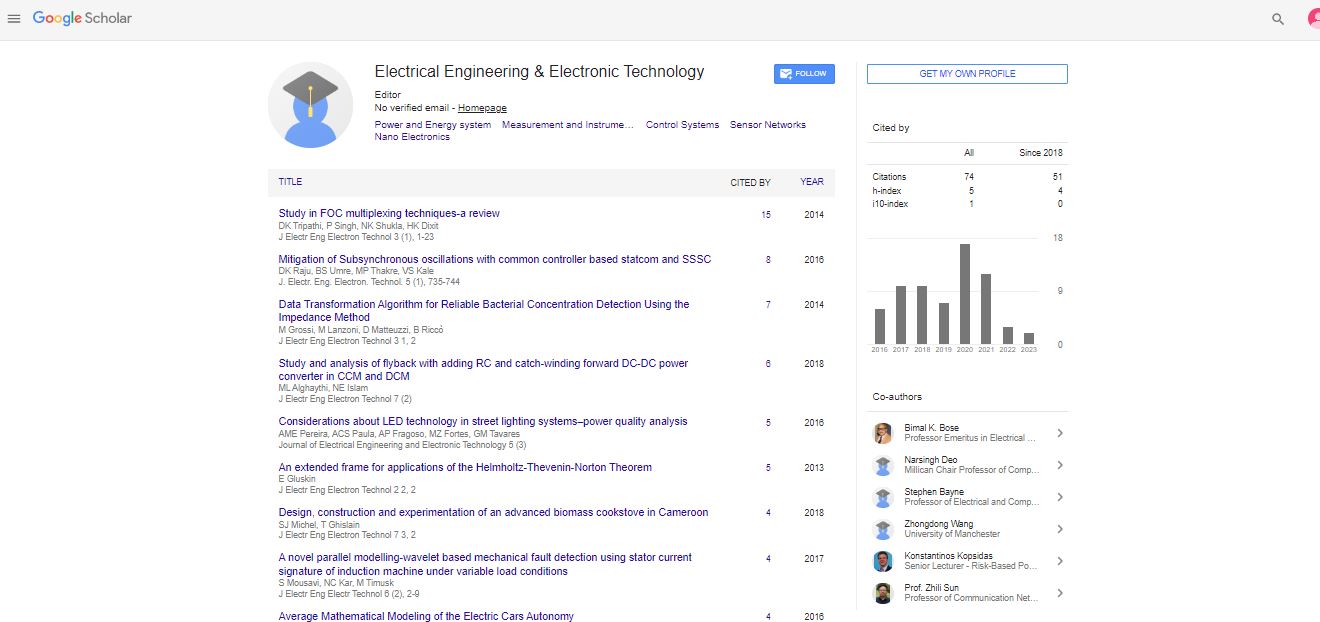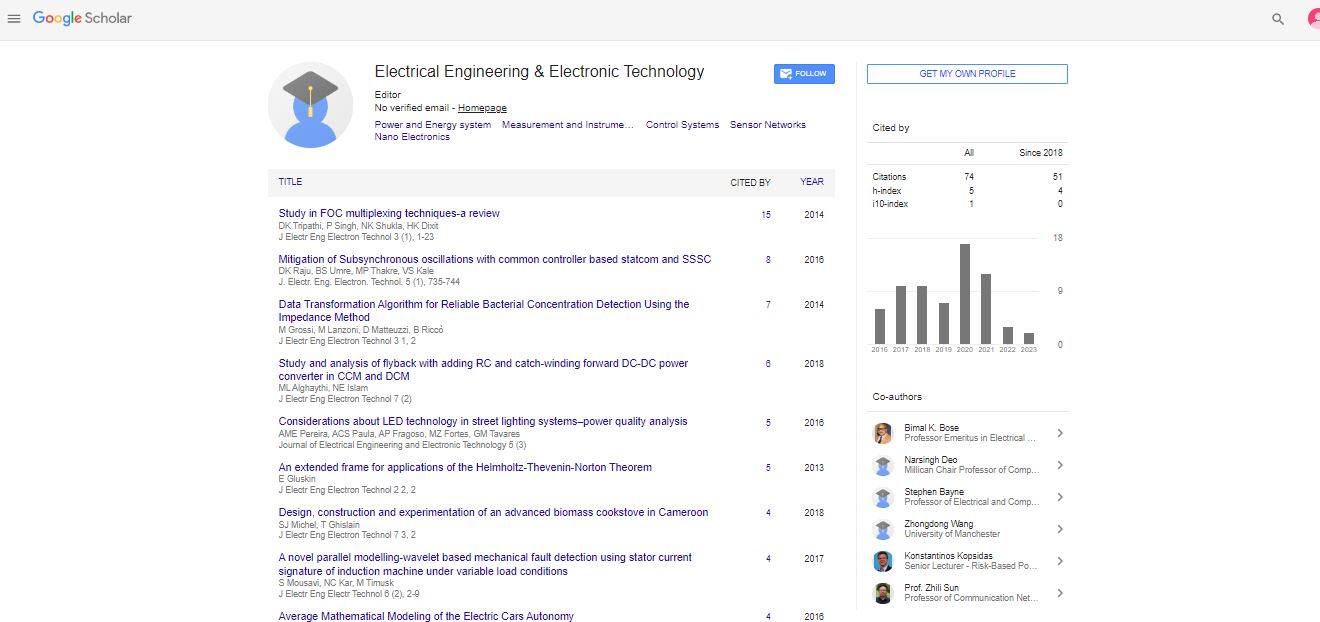Opinion Article, J Electr Eng Electron Technol Vol: 12 Issue: 6
Renewable Energy Technologies: Solar, Wind, and Beyond
Martinez Garcia*
Department of Electronics, Massachusetts Institute of Technology (MIT), Cambridge, Massachusetts, USA
*Corresponding Author: Martinez Garcia
Electronics Research Lab, Massachusetts
Institute of Technology (MIT), Cambridge, Massachusetts, USA
E-mail: garciam@mit.edu
Received date: 23 October, 2023, Manuscript No. JEEET-23-122064;
Editor assigned date: 25 October, 2023, Pre QC No. JEEET-23-122064 (PQ);
Reviewed date: 08 November, 2023, QC No. JEEET-23-122064;
Revised date: 15 November, 2023, Manuscript No. JEEET-23-122064 (R);
Published date: 22 November, 2023, DOI: 10.4172/2325-9838.1000975.
Citation: Garcia M (2023) Renewable Energy Technologies: Solar, Wind, and Beyond. J Electr Eng Electron Technol 12:6.
Description
The study explores the dynamic landscape of sustainable energy sources, focusing on solar and wind technologies as well as emerging trends in the realm of renewable energy. This interdisciplinary field is pivotal to addressing global energy challenges and mitigating environmental impacts. This provides an overview of the fundamental principles, methodologies, and innovations associated with renewable energy technologies.
The urgent need to transition from fossil fuels to renewable energy sources underscores the importance. This section introduces the multifaceted nature of renewable energy technologies, emphasizing their role in achieving energy security, reducing greenhouse gas emissions, and promoting sustainable development.
Solar energy technologies
Solar energy stands as a cornerstone in the pursuit of renewable energy. This section delves into the principles and applications of solar technologies, including Photovoltaics (PV) and solar thermal systems. It explores the photovoltaic effect, solar cell technologies, and the design and operation of solar thermal power plants, showcasing their role in harnessing the abundant energy from the sun.
Wind energy technologies
Wind energy, a mature and rapidly expanding technology, plays a crucial role in the renewable energy mix. This section covers the principles behind wind turbines, the conversion of kinetic energy into electricity, and the design considerations for onshore and offshore wind farms. It also explores advancements in wind turbine technology, including larger turbines and novel designs to maximize energy capture.
Hydropower and beyond
While solar and wind dominate the discourse, hydropower remains a significant contributor to renewable energy. This section explores traditional hydropower technologies as well as innovative approaches such as run-of-river and tidal energy. Additionally, emerging technologies like wave energy and Ocean Thermal Energy Conversion (OTEC) are discussed, showcasing the diversity within the renewable energy portfolio.
Integration and smart grids
Efficient integration of renewable energy into existing power grids is a critical aspect of ensuring stability and reliability. This section explores the concept of smart grids, incorporating advanced monitoring, communication, and control technologies. It discusses the challenges and solutions for managing the intermittent nature of renewable energy sources and balancing supply and demand in realtime.
Energy storage technologies
Addressing the intermittency of renewable energy sources requires effective energy storage solutions. This section covers various energy storage technologies, including batteries, pumped hydro storage, and thermal energy storage. It explores advancements in battery technologies, such as lithium-ion and emerging technologies like solid-state batteries, to enhance the efficiency and reliability of renewable energy systems.
Challenges in renewable energy adoption
It acknowledges the challenges associated with widespread adoption of renewable energy technologies. It addresses issues such as intermittency, grid integration, policy frameworks, and the environmental impact of manufacturing and decommissioning renewable energy infrastructure.
Economics and policy frameworks
The economic viability and policy support are integral to the success of renewable energy technologies. This section explores the cost dynamics of solar and wind technologies, the role of government incentives, and the impact of policy frameworks on fostering a conducive environment for renewable energy deployment.
Conclusion
The study concludes by highlighting emerging innovations in renewable energy technologies and forecasting future prospects. It explores advancements in materials science, artificial intelligence applications, and the potential role of decentralized energy systems and microgrids in shaping the future of renewable energy. In conclusion, this provides a comprehensive overview of "Renewable Energy Technologies: Solar, Wind, and Beyond." It serves as a valuable resource for students, researchers, policymakers, and industry professionals seeking insights into the fundamental principles, current developments, and future directions in the dynamic field of renewable energy.
 Spanish
Spanish  Chinese
Chinese  Russian
Russian  German
German  French
French  Japanese
Japanese  Portuguese
Portuguese  Hindi
Hindi 
